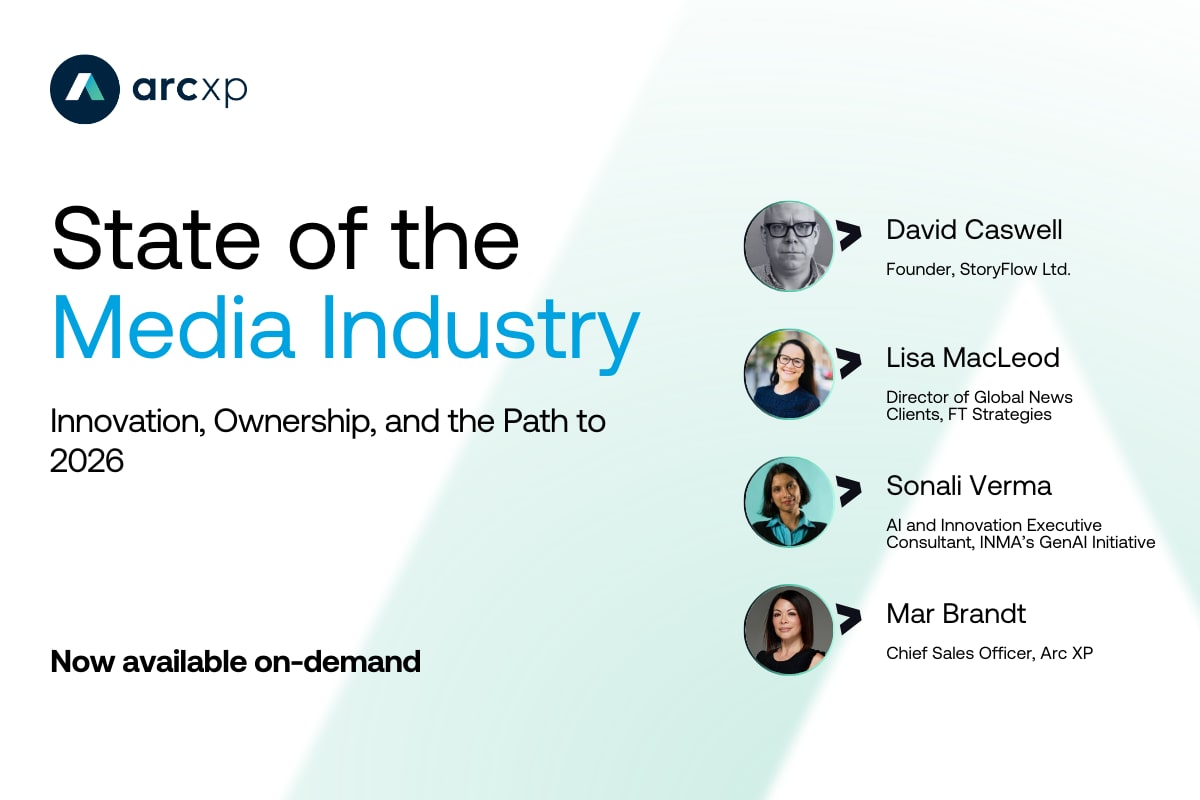The Future of Media Is Experience: Insights from Connect London
Takeaways from Connect London, hosted by Arc XP
From redefining the expectations of today’s digital audiences to embedding AI into editorial workflows, two standout sessions at Connect London tackled the forces reshaping media. Arc XP brought together thought leaders from AWS, Press Gazette, and Bauer Media Group to explore what it takes to meet the needs of modern audiences—and why delivering exceptional user experiences is central to success.
Session 1: The Rise of Audience 2.0 — How Media Can Meet the Demands of Today’s Digital Consumer
Moderated by Arc XP CTO Joe Croney, this panel featured AWS’s Matt Carter and Press Gazette’s Dominic Ponsford in a lively discussion on how publishers must evolve to serve the next wave of digital consumers.
So, what is Audience 2.0?
According to Carter, this new audience is shaped by four defining traits:
- Format: Today’s consumer is omnichannel by default. They move seamlessly across platforms—print, podcast, video, and more.
- Fierce Competition for Attention: It’s never been harder to earn and keep it. AI-powered omnichannel content is what they demand.
- Privacy-First Expectations: It’s a paradox — people want personalization without it feeling invasive.
- A Craving for Authenticity: People spot AI content fast. That human layer still matters.In an AI-saturated world, “real” content builds trust.
Reaching Gen Z Requires a Different Playbook
Ponsford emphasized that Gen Z isn’t going directly to publisher websites. Instead, they engage with bite-sized, habit-forming news through apps and social feeds. “There’s a real trend toward streak-based news consumption—just enough to feel informed,” he said, drawing comparisons to gamified platforms like Duolingo.
Audio and video continue to rise, even among traditional print publishers, and overlooked channels like Google Discover and newsletters are gaining traction. But adapting to new distribution models means facing algorithmic challenges—and resisting the temptation to chase clicks at the expense of quality.
AI, Emotion, and the Ethlical Tightrope
Carter explored AI’s role in shaping emotionally intelligent content. “It’s not just about what someone does—it’s about how the content makes them feel,” he said. Using multimodal signals, AI can tailor content based on emotional feedback to increase engagement.
But that power comes with responsibility. Ponsford warned of the risks, recalling how vulnerable users have previously been harmed by AI-powered targeting. Carter echoed the importance of guardrails: “Relevance without exploitation—that’s the goal.”
Takeaway: Serving Audience 2.0 isn’t about churning out more content—it’s about crafting authentic, ethical, emotionally aware experiences that meet users where they are.
Session 2: Transforming User Experiences with AI — Keynote from Marcel Semmler, Bauer Media Group
In a powerful keynote, Marcel Semmler, Chief Product Officer at Bauer Media Group, shifted the conversation from audience expectations to the user experience behind the tools built to meet them. His message: AI is only as effective as its adoption—and adoption hinges on usability.
Why UX is the Make-or-Break Factor for AI
“The biggest threat to AI adoption isn’t regulation or ethics—it’s bad UX,” Semmler stated plainly. He argued that overly complex AI tools deter real-world usage, especially among time-strapped editorial teams.
Instead, AI should feel like using a smartphone: simple, intuitive, and immediately helpful.
The Future of AI Is Invisible—and Embedded
Semmler envisioned a future where AI is woven into workflows so seamlessly that users barely notice it’s there. This philosophy is driving Bauer’s development of internal tools like Tony and EVA, which act as behind-the-scenes editorial assistants.
“AI shouldn’t be the product. The value is in the results it enables,” he said. Rather than flashy chatbots or one-off widgets, the focus should be on proactive, embedded AI that supports content creators from ideation to SEO.
Smart Workflows, Not Just Speed
Rather than just accelerating tasks, the next phase of AI should be about anticipating them. “The revolution isn’t in GPT interfaces—it’s in AI that says, ‘Can I help you finish that headline?’ before you even ask,” Semmler explained.
Takeaway: AI’s future in publishing depends on thoughtful integration. If tools are intuitive and invisible, they don’t just boost productivity—they fundamentally reshape how content is made.
The Big Picture: Experience Is Everything
Across both sessions, one theme rang loud and clear: success in modern media isn’t about piling on technology or churning out more content. It’s about building exceptional experiences—for both the audiences consuming content and the teams producing it.
Whether it’s understanding the evolving habits of Gen Z or designing AI tools that fade into the background, media organizations must think holistically. The winners in this next chapter will be the ones who treat content not just as a product—but as a relationship built on trust, relevance, and ease.
Recent resources




